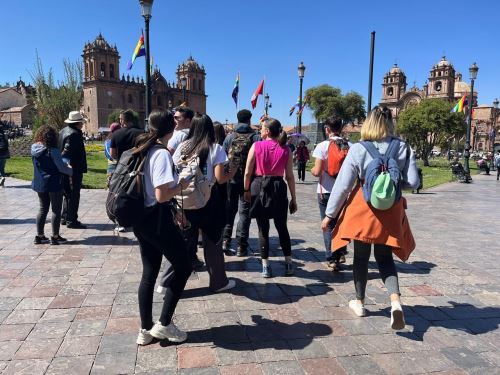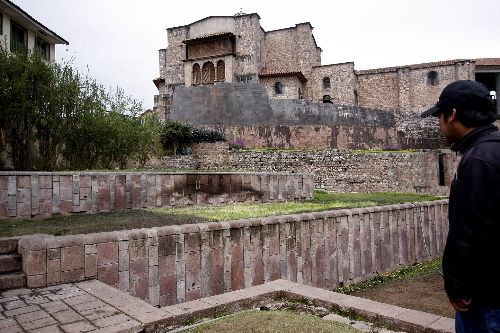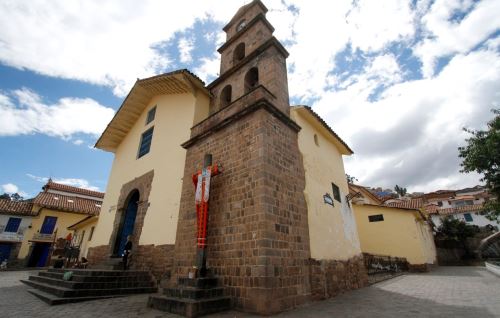09:00 | Cusco (Cusco region), May. 20.
The renowned portal GuruWalk.com, specialized in walking tours, created a ranking of the "Top 100 best walking cities 2025." Cusco appears on the list, and below we explain what this portal highlights about the Inca's ancient capital.
When it comes to travel, what tourists value most is a destination that is easy to explore on foot, without relying on public transportation or renting a vehicle. That is why this ranking aims to highlight the advantages offered by such cities.
The ranking is led by Rome, the capital of Italy, which stands out for the proximity of its main attractions and is key for travelers who want to experience the sights that represent that ancient history.

"The former capital of the Inca Empire, Cusco has preserved the splendour of its past. Walking along cobbled streets leading to the Plaza de Armas or discovering ruins such as Sacsayhuaman is like reliving history with every step," it reads.
Other international portals have highlighted the charms of Cusco that make it a favorite of thousands of travelers. For example, at the end of 2024, the prestigious travel and tourism magazine Condé Nast Traveler chose the Imperial City as a must-visit destination to celebrate Christmas and New Year.
In an article from this distinguished U.S. publication on the best destinations in the world to ring in the New Year, it is noted that, for instance, Cusco's Plaza de Armas is a fantastic place due to its remarkable civil and religious architecture, craft shops, restaurants, and the cosmopolitan public that gathers in this magnificent meeting space.

Visiting Cusco, the ancient capital of the Inca Empire located in southern Peru, means for tourists experiencing its monumental buildings that captivate the senses with their impressive scenic beauty; a combination of history, culture, art, and profound knowledge of engineering and architecture that amazes everyone.
Iconic Places
Among the must-see iconic places in the city of Cusco are the following:
Main Square
Starting point for touring the historic center of the imperial city. Along its perimeter is the imposing Cathedral of Cusco, the main Catholic religious temple.
Visiting the plaza during the day allows one to appreciate the contrast of the mountains with the stone city; and at night, one can observe how the lamplight enhances the architectural beauty of the place, where its beautiful central fountain stands out. On the perimeter of the Plaza de Armas is the beautiful Church of the Jesuits or the Church of the Society of Jesus.
Temple of Coricancha

Also known as the Temple of the Sun, it was the religious, geographic, and political center of Cusco. Its interior is believed to have been covered with large gold plates.
The impressive stones that make it up fit together perfectly, and it is a place full of history that must not be missed. On its foundations stands the Convent of Santo Domingo. It is located just a few blocks from Cusco's Plaza de Armas (Main Square).
San Blas Neighborhood
Located just a few blocks from the Plaza de Armas, this neighborhood is famous for being home to the workshops and homes of the most important artists and artisans of the imperial city.
Walking its narrow streets and small squares allows one to appreciate buildings of great beauty such as its church, one of the oldest in Cusco.

Other must-see Catholic temples include La Merced, San Cristobal, and San Sebastian, among others.
These buildings were, in many cases, constructed atop ancient Inca structures. Many of them are, besides centers of worship and convents, beautiful museums housing invaluable pieces of religious art inside, including paintings from the famous Cusco School.
Municipal Palace
Another iconic building is the Municipal Palace, formerly the seat of the old town hall, which is currently occupied by Cusco's municipal authorities. It is located in Plaza del Regocijo.
Regional Historical Museum
The building is located in the colonial house where the illustrious Cusco-born writer and chronicler Garcilaso de la Vega Chimpuocllo resided until 1560, on Heladeros Street s/n.
It houses a beautiful collection of archaeological objects from pre-Inca and Inca cultures, as well as a select collection of colonial paintings that showcase the achievements of Cusco artists.
The Regional Historical Museum of Cusco, managed by the Ministry of Culture, became one of the winners of the eleventh edition of the Ibermuseos Education Award in September 2020, thanks to a project of inclusion and equality to disseminate cultural heritage.
Tourist Tickets
The Cusco Tourist Ticket has two rates: one for foreign visitors and another for domestic ones.
The rate for the Comprehensive Tourist Ticket for adults is S/130 (about US$35), and for students it is S/70 (about US$19).
Students aged 10 to 17 only need to present their ID, while those between 18 and 25 years old must present a valid student ID.
Meanwhile, the rate for the Partial Tourist Ticket, valid for any of the three established circuits, is S/70 (about US$19).
As for the rate for domestic tourists, also called the Promotional Ticket, it costs S/70 (about US$19) for adults and S/40 (about US$11) for students.
As with foreign visitors, students between 10 and 17 years old only need to present their ID, while those between 18 and 25 must present a valid student ID.
Similarly, the rate for the Partial Tourist Ticket, valid for any of the three established circuits, is S/40 (about US$11).
Foreigners residing in Peru can access the national tourist rate, or Promotional Ticket, by presenting a valid foreign resident card or permanent residence document.
Children up to 9 years old do not pay, although at the Qosqo Center of Native Art, payment is required starting at age 6 due to the use of a seat, according to the Cusco Cultural Tourism Integrated Services Committee (Cosituc).
Both the Comprehensive Tourist Ticket and the Partial Ticket include three circuits that feature the following attractions:
Circuit I: Archaeological parks of Sacsayhuaman, Qenqo, Puka Pukara, and Tambomachay.
Circuit II: Qoricancha Site Museum, Regional Historical Museum, Museum of Contemporary Art, Pachacutec Monument, Museum of Popular Art, Qosqo Center of Native Art, as well as the Archaeological Parks of Tipon and Pikillacta.
Circuit III: Archaeological Parks of Ollantaytambo, Písaq, Chinchero, and Moray.
If you have the Comprehensive Tourist Ticket, it is valid for visiting any of the three circuits for 10 days. Meanwhile, if you have the Partial Tourist Ticket, the validity of Circuit I is only one day, and Circuits II and III are two days.
Cusco also offers several viewpoints that can be accessed free of charge, providing magnificent panoramic views of the Imperial City.
The most notable and frequently-visited is the White Christ, located on the Pukamuqu Hill.
The image is similar to the Christ the Redeemer statue in the Brazilian city of Rio de Janeiro, although smaller, measuring around eight meters high. Although it is protected by a metal fence, the statue of Jesus with open arms welcomes visitors and seems to watch over the city of Cusco.
(END) MAO/JMP/MVB
Published: 5/20/2025